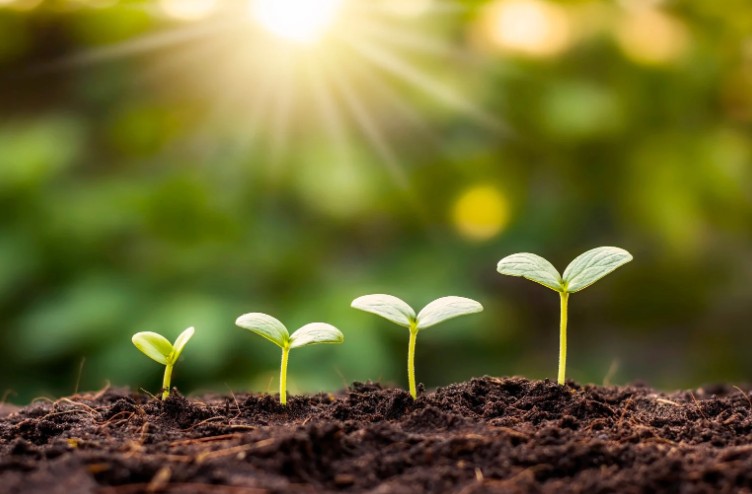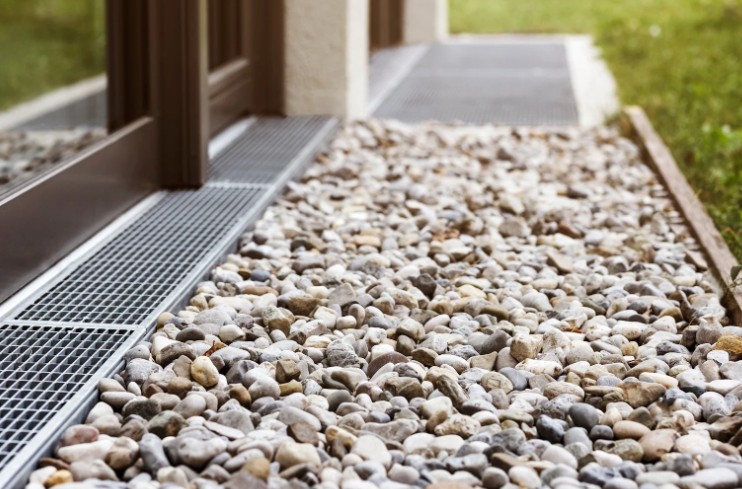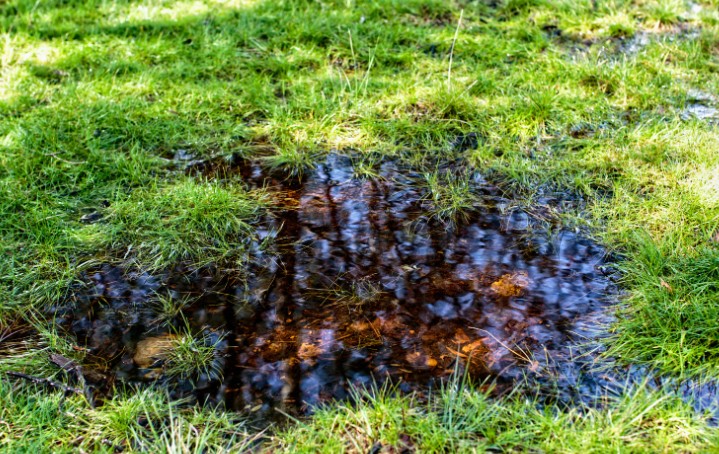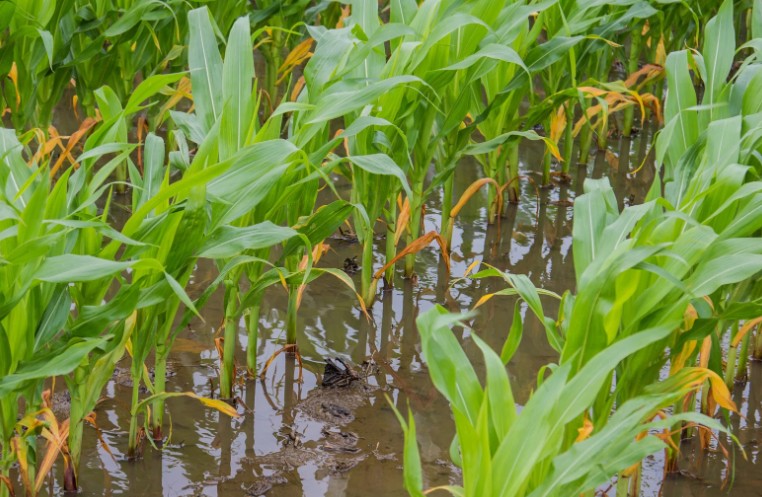- Why Does Clay Soil Get Waterlogged So Easily?
- How to Fix Waterlogged Clay Soil?: Step-by-Step Methods That Worked for Me
- Which Soil Amendments Work Best for Waterlogged Clay?
- When Should You Start Fixing Waterlogged Soil?
- Can You Still Grow Plants in Waterlogged Clay Soil?
- Conclusion: Reclaiming Your Garden from Clay Soil Waterlogging
- FAQs On How to Fix Waterlogged Clay Soil
Living in the UK, I’ve come to realise that clay soil is both a blessing and a evil . On one hand, it’s rich in nutrients; on the other, it becomes a sticky, soggy mess after even modest rainfall.
If you’ve stepped into your garden and found yourself ankle-deep in mud, you’re not alone — I’ve been there too. But the good news? You can absolutely fix it.
In this guide, I’ll share exactly how to fix waterlogged clay soil, based on what’s worked (and what hasn’t) in my own garden.
Why Does Clay Soil Get Waterlogged So Easily?
Understanding clay soil composition
Clay soil is made up of tiny, densely packed particles that cling to water. Unlike sandy or loamy soils, which allow water to drain freely, clay tends to hold onto moisture — and not in a good way.
When saturated, it becomes sticky and compact, reducing air circulation and suffocating plant roots.
How UK weather contributes to persistent waterlogging?
The UK climate adds an extra challenge. Frequent rainfall, particularly in autumn and winter, means clay soil often doesn’t get a chance to dry out properly.
The result is standing water, compacted earth, and a slow, soggy mess that doesn’t recover easily — especially if drainage hasn’t been improved.

What are the signs of waterlogged soil in your garden?
In my experience, these are the telltale signs:
- Water pooling or puddles after rain
- Mushy, compacted soil that’s hard to dig
- Stunted or yellowing plants
- A musty smell from overly wet soil
- Poor root development or rotting roots when digging up plants
If you’re seeing two or more of these, you’re definitely dealing with waterlogged clay soil.
How to Fix Waterlogged Clay Soil?: Step-by-Step Methods That Worked for Me
Aerating the soil to relieve compaction
One of the best things I ever did for my clay-heavy garden was aeration. I used a hollow-tine aerator to punch holes deep into the soil.
This allows air and water to migrate more casually and break up compacted layers. It’s physically demanding but makes a big difference.
I recommend doing it in spring or early autumn, when the soil is moist but not soggy.
If you don’t have an aerator, even a sturdy garden fork will do — just push it in every 10–15 cm and wiggle it slightly to open the structure.
Adding organic matter to improve structure
Clay soil craves organic matter. Each autumn, I spread a generous layer of compost, well-rotted manure, or leaf mould across the surface.
Over time, this takes charge into the soil with the help of earthworms and microbes, converting the heavy clay into a loamier, better-draining texture.
I’ve found that compost made from kitchen waste and garden clippings works beautifully. It not only improves drainage but also feeds your soil.
Topdressing with sand and compost mix
After aerating, I apply a topdressing mix of sharp sand and compost — usually in a 60:40 ratio. This helps open up the topsoil and promotes better water infiltration.
It’s important to use horticultural sand, not builder’s sand, which can actually make things worse by turning the soil into concrete-like sludge.
Brush the mix into the holes after aerating, and repeat once a year. Over time, you’ll see a marked difference in how your lawn or borders handle wet weather.
Installing drainage systems like French drains
If you’ve tried all the above and still find your garden flooding, it may be time to install a more engineered solution.
I’ve used French drains in one of my worst-hit garden corners. These are gravel-filled trenches holding penetrated pipes that alter the water away from saturated zones.
While this isn’t a weekend DIY for everyone, it can be a game-changer for persistently soggy areas. You’ll need to carefully plan where the water will be redirected — a soakaway or low point works best.

Building raised beds for severe problem areas
When all else fails, I’ve found raised beds to be a fantastic workaround. By building up the planting area above the clay, you create a space that drains freely and can be filled with rich, loamy compost.
This method allows me to grow even moisture-sensitive plants like lavender and rosemary, which would otherwise never survive in my natural soil.
Which Soil Amendments Work Best for Waterlogged Clay?
Comparing organic materials: compost, leaf mould, manure
Here’s a comparison of the most effective organic materials I’ve tried:
| Amendment | Drainage Improvement | Nutrient Boost | Best Time to Apply |
| Compost | Moderate to High | High | Autumn/Spring |
| Leaf Mould | Moderate | Low | Autumn |
| Well-Rotted Manure | High | Very High | Autumn/Winter |
Each one offers something different. In person, I layer them, manure in the autumn, compost in spring, & leaf mould as a mulch throughout the entire year.
Should you use sand or grit? What worked for me and what didn’t
Many people say “just add sand”, but I’ve learned the hard way that not all sand is suitable. Only sharp, coarse sand (like horticultural sand) works for clay soil. Fine sand or builder’s sand tends to bind with the clay and create a cement-like mess.
Grit, on the other hand, can work well — especially when mixed with compost — but it’s expensive and heavier to spread. I now mostly stick to sand-compost blends for ease and effectiveness.
Natural soil improvers available in the UK
In UK garden centres and online stores, you can find products labelled as clay soil improvers — many are blends of composted bark, gypsum, or green waste compost. I’ve had good results with products like:
- Westland Clay Breaker
- Melcourt SylvaGrow Soil Improver
- Organic mushroom compost (from local farms)
These are excellent supplements to your DIY efforts.
When Should You Start Fixing Waterlogged Soil?
Best time of year for aeration and amendments
Spring and autumn are your golden windows. The soil is soft enough to work with and not saturated.
I never try to aerate during winter or after heavy rain — it damages the soil structure and just turns things into mud.
Seasonal adjustments to reduce future waterlogging
Each season brings an opportunity:
- Spring: Aerate, topdress, and feed
- Summer: Mulch to protect soil and retain moisture balance
- Autumn: Add compost and manure
- Winter: Avoid heavy foot traffic and compaction
By doing a little each season, you keep clay soil manageable year-round.
Long-term soil health strategies I follow
In the long run, it’s about building healthy soil. I never leave soil bare, always rotate plants, and continue adding organic matter every year. It’s not a one-time fix — it’s a gardening lifestyle.

Can You Still Grow Plants in Waterlogged Clay Soil?
My experience with clay-tolerant plants
Absolutely — once I stopped fighting the soil and started choosing plants that thrive in clay, gardening became far more enjoyable. Plants like:
- Dogwood (Cornus)
- Astilbe
- Ligularia
- Hosta
- Daylilies
They don’t mind the heavy, damp conditions and actually perform better in them.
How I modified my planting techniques?
I started digging wider, shallower holes instead of deep ones, which prevents water from pooling at the root zone.
I also slightly elevate the planting area by mounding compost, giving plants better drainage with drain covers even if the rest of the soil stays wet.
Mistakes to avoid when planting in soggy soil
One major mistake I made early on was overwatering. Clay already holds moisture, so I had to learn to water less and check the soil before grabbing the hose.
I also avoid using bark mulch too thickly, as it can trap moisture at the surface.
Conclusion: Reclaiming Your Garden from Clay Soil Waterlogging
Fixing waterlogged clay soil isn’t a weekend project — it’s a process. But I promise, with the right methods and a little persistence, you’ll begin to see your soil transform from boggy and unworkable to rich, breathable, and full of life.
Here’s a final recap from my own gardening journey:
- Aerate the soil to allow air and water in
- Topdress with sharp sand and compost annually
- Add organic matter regularly — compost, manure, leaf mould
- Install drainage in trouble spots if needed
- Choose plants that love clay conditions
- Work with the seasons and build soil health over time
It took me a couple of years, but now I have a lawn that drains properly, flower beds that flourish, and a garden I can walk through even after heavy rain. If I know how to fix waterlogged clay soil — you can too.
FAQs On How to Fix Waterlogged Clay Soil
1. How long does it take to fix clay drainage issues?
From my experience, you’ll see some improvement within weeks if you aerate and topdress properly. Full transformation, however, can take 12–24 months of seasonal maintenance and organic matter additions.
2. Will adding gravel improve clay drainage?
No — this is one of the biggest myths. Gravel in clay can actually make the situation worse by creating a perched water table, where water collects above the gravel rather than draining through it.
3. Is it better to replace or amend clay soil?
In most cases, amending is better. It’s more cost-effective and sustainable. I only replace soil in raised beds or small garden features. For lawns and large borders, building healthier clay soil is the way to go.


0 Comments